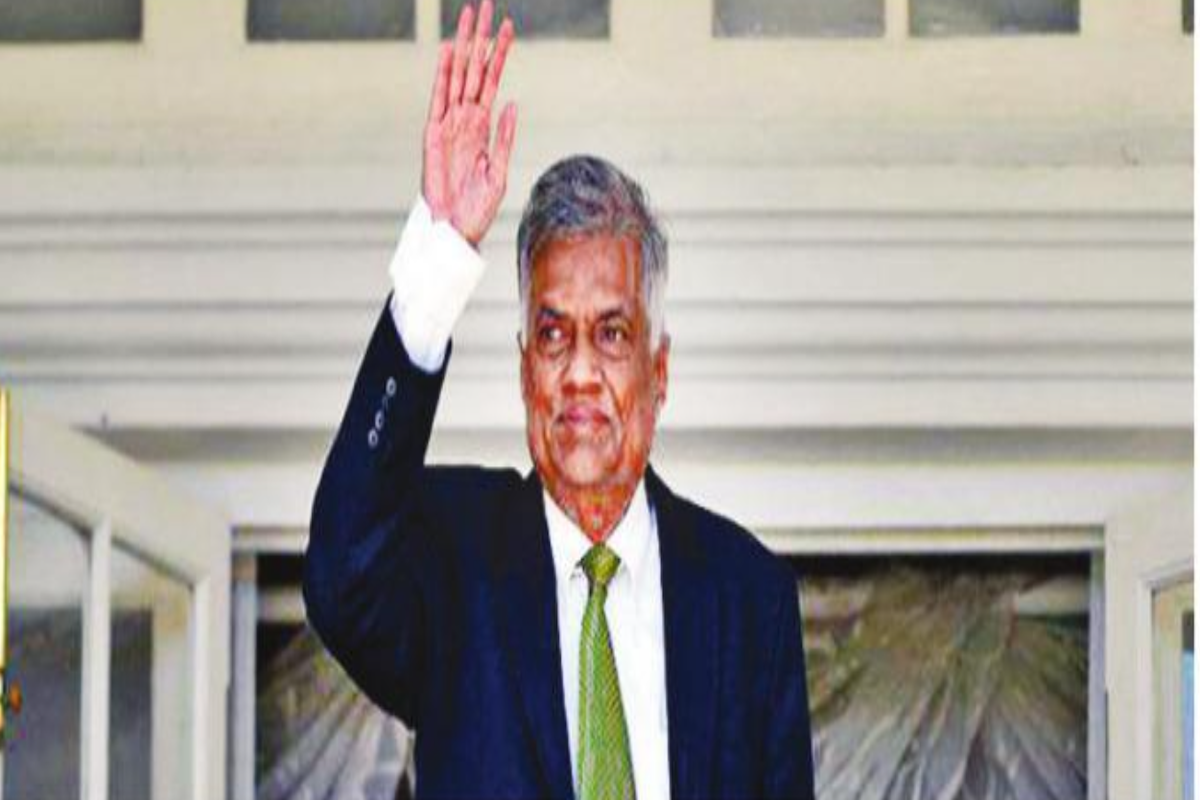Sri Lankan leader Ranil Wickramasinghe became the prime minister for the sixth time on Thursday. He is not new to Sri Lanka, the region, or even the world. Sri Lanka has been on the boil for some time, facing a political and economic crisis. With the pandemic, rising oil prices, tax cuts, and foreign exchange crises, the 22 million people of the island country are looking to lead a normal life after the present turbulence.
Blaming the Rajapaksa clan, there is public pressure for the removal of President Gotabaya Rajapaksa. Mahinda, Prime Minister and elder brother of the president were forced to resign along with his cabinet on Monday. The people have taken to the streets amidst curfew and shoot out orders. The “Go Gota Go” slogan is catching on fast.
Opposition leader Sajit Premadasa is for the abolition of the presidency. He heads the 52-mem- ber UNP faction that formed a new party, Samagi Jana Balawehaya. An alliance led by the Rajapaksas has 100 seats in the 225-member Parliament. Premadasa declined the Prime Ministership, after which Ranil was the next choice.
It is a bizarre situation as the 73-year-old Ranil is the only lawmaker from his United National Party and has no backing in Parliament. Each of the new prime minister’s earlier terms had been truncated. Twice he was dismissed – in 2004 by President Chandrika Kumaratunga and in 2018 by Gotabaya. His running feud against Chandrika was well known, and his relationship with Rajapaksa was not cordial.
Ranil has to face many challenges. The first is to take along all the political parties. He has no mandate and no other member from his party in Parliament, and he needs help from other parties.
Ranil has good equations with both Beijing and New Delhi. He has already met envoys from China and India. The Indian High Commissioner to Sri Lanka, Gopal Baglay, has tweeted that India is looking forward to working with the new regime. The US envoy to Sri Lanka, Julie Chang, has welcomed the new PM. Sri Lanka will get support from other countries. But his challenge will be domestic politics, with the opposition parties pulling in different directions.
Secondly, the economic chaos had been coming for some time, mainly due to the policies of the Rajapaksas. There is an acute power shortage and also a scarcity of essential commodities. There is a foreign exchange crisis. India and China have come to Colombo’s rescue, but that is not enough. Ranil had shown his abilities earlier by negotiating for a $1.5 billion IMF bailout. Sri Lanka is again trying to negotiate an IMF loan to come out of the present crisis. Once the IMF gives a loan, Sri Lanka will be forced to take up economic reforms. All these require bold decisions. Thirdly, President Gotabaya has acquired vast powers, and he has hinted he might shed some of them. But that is a long process. What Ranil needs is complete backing to negotiate political and economic reforms.
Fourth, is the minority question. How will Ranil deal with the Tamils? The Tamil question has been dogging the country for decades, first with the LTTE militancy and then with the civil war. The Tamil reconciliation process has been going on since the wiping out of the LTTE. New Delhi has been insisting on a speedy resolution.
Fifth is corruption. Even in 2015, corruption was a huge issue when Ranil took over. The public is angry at the massive corruption in the government and blames the Rajapaksa clan for this. When the system is deep-rooted in corruption, it is not easy to find a solution.
Last but not least is balancing between the two giants – India and China. Ranil has good equations with both. The Rajapaksa regime had been leaning more towards Beijing. But Ranil must walk a tightrope as he needs both the powers to bring back normalcy. There is every possibility of enhanced support from India as it has welcomed the democratic process in the island country.
New Delhi needs to utilize this opportunity and mend fences with Sri Lanka. Helping the island country in every possible way to stabilise is indeed an opportunity and in line with Modi’s “Neighbourhood first” policy. Unfortunately, the South Asian region is facing unrest by and large. There is political and economic instability in Pakistan, Nepal, Myanmar, Maldives, and Afghanistan. Sri Lanka is strategically important for India and needs all the support.











